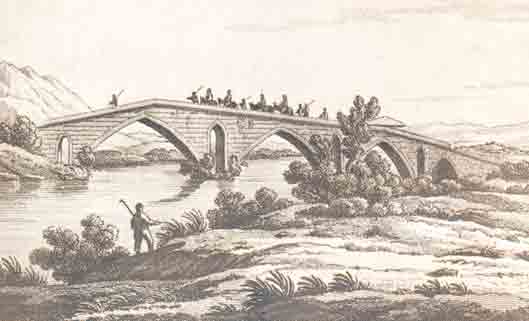People
Greek War Of Independence (1821-1829)
Athanasios Diakos (1788-1821)
Athanasios Masavetas (Diakos) {Αθανάσιος Μασαβέτας (Διάκος)} (1788-1821). An attractive, honest and mettlesome man, he was known as Diakos (Deacon) because he had been ordained Deacon of the Monastery of Saint John the Baptist {Agios Ioannis O Baptistis ~ Άγιος Ιωάννης Ο Βαπτιστής}, where he took the name Anthimos {Άνθιμος}.
He forsook his vows and became a Klepht {Kleftis ~ Κλέφτης} (name for those who took to the mountains under Ottoman rule and refused to submit) when he killed an Ottoman detachment leader. He then became second in command to Odissefs Androutsos [People]. When he was told that Ottoman forces under Bryonis Omer Paşa (Albanian army officer in the service of the Ottomans) and Mehmet Kose Paşa were on their way to quash the uprising in Mainland {Sterea ~ Στερεά} Greece, he stayed in Alamana {Αλαμάνα} where he fought with unimaginable bravery with just a few comrades. He took the position of Pouria {Πουριά} himself but was taken prisoner while wounded and unconscious. The Pasha's men took him to Lamia {Λαμία} in his injured state.
The following day Bryonis Omer Paşa asked him to convert to Islam but he was enraged and refused scornfully, saying; "Take yourselves and your faith, you scum, and get lost! I was born a Greek and a Greek I'll die." Then the Pahsas decided to put him to death in the harshest manner; by impaling.
They roasted him alive on April 23rd, 1821, and stood the body up in the spot where his statue stands today. To make an example of him they left his baked body there for three days and then threw it in a ditch.
Tradition has it that some good Christian took the body in the middle of the night and buried it. But the exact location of the grave has never been discovered.
Athanasios Masavetas (Diakos) (1788-1821)

The Battle On Alamana Bridge
(by S. Pomardi in 1820)

Athanasios Diakos Captive
(primitive lithography)

04-23-2004